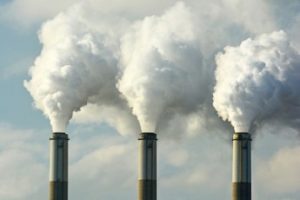Amid news reports that EPA Administrator Scott Pruitt was planning to increase his direct involvement in the Agency’s environmental justice programs, the Agency announced that it had taken an enforcement action against S.H. Bell, a Chicago company, for alleged violations of air pollution limits for manganese.

S.H. Bell is located in the southeast side of the city, an area with a majority low-income Hispanic and African-American population. The company stores manganese-containing materials in large open-air piles and engages in crushing, screening, loading, and unloading of the materials.
At present, enforcement is limited to a Notice of Violation (NOV). In an accompanying letter, the EPA offered the company the opportunity to confer with Agency officials about the violations alleged in the NOV.
“The conference will give you an opportunity to present information on the specific findings of violation, any efforts you have taken to comply and the steps you will take to prevent future violations,” the letter states.
Opacity Problems in 2014
The EPA had previously issued S.H. Bell an NOV in 2014 when the Agency alleged that that fugitive emissions of manganese from the facility were in violation of federal opacity levels. As part of an agreement with the Agency, the company installed new air pollution control equipment, implemented an enhanced fugitive dust plan, and installed air quality monitors to measure PM-10 and manganese.
Ferroalloys NESHAP
The current NOV concerns limits for manganese the EPA established in its Risk and Technology Review for the National Emissions Standards for Hazardous Air Pollutants: Ferroalloys Production (NESHAP) (October 6, 2014, FR). Manganese is a neurotoxin that when inhaled at certain concentrations can cause neuro-motor and neuro-psychological deficits. Based on research performed by the Agency for Toxic Substances and Disease Registry (ATSDR), the EPA established a health-based standard screening level inhalation minimal risk level for chronic exposure to manganese at 0.3 cubic micrograms (µg/m3). The EPA reports that as of August 1, 2017, PMl0 metals air monitoring data submitted by S.H. Bell showed an average 0.32 µg/m3 of manganese for the period March 1, 2017, through June 30, 2017.
Bulk Storage in Chicago
Industrial emissions affecting Southeast Chicago have been an ongoing concern for local environmental and health groups as well as national organizations, including the Natural Resources Defense Council (NRDC).
“This is another example of bulk storage facilities in Chicago endangering their neighbors,” said the NRDC. “Manganese is handled in many locations across the region—the data points to a problem in this facility and it needs to be addressed now. But we also need to ensure others are not exposed to this toxic dust in other neighborhoods. The Southeast Side bears a huge pollution burden. It is time for the City of Chicago to consider the cumulative impacts of the industrial and storage facilities in the area. As long as the City looks at these issues in piecemeal fashion, dirty and dangerous projects will continue to be pushed on the community. That is unfair and we will continue fighting against this injustice.”
Impact of Summer
In a statement, S.H. Bell said the readings were not indicative of the company’s pollution control performance.
“Regarding our June data, hotter weather generates dust from all types of sources and we expected that we might see the highest monitor readings during the summer, including readings of metals that are not in any of S.H. Bell’s materials,” said S.H. Bell. “While we are still seeing the impact of offsite sources on monitor readings, we are examining our operations to identify other potential causes. To get a full picture, we need to analyze the data that will be available once our state-of-the-art large dust collectors (which operate like large dust vacuums) become operational this month. It is still our expectation that on a long-term basis, manganese levels will average below the minimal risk levels established during the Obama administration.”
EPA’s NOVs and related documents are here.
